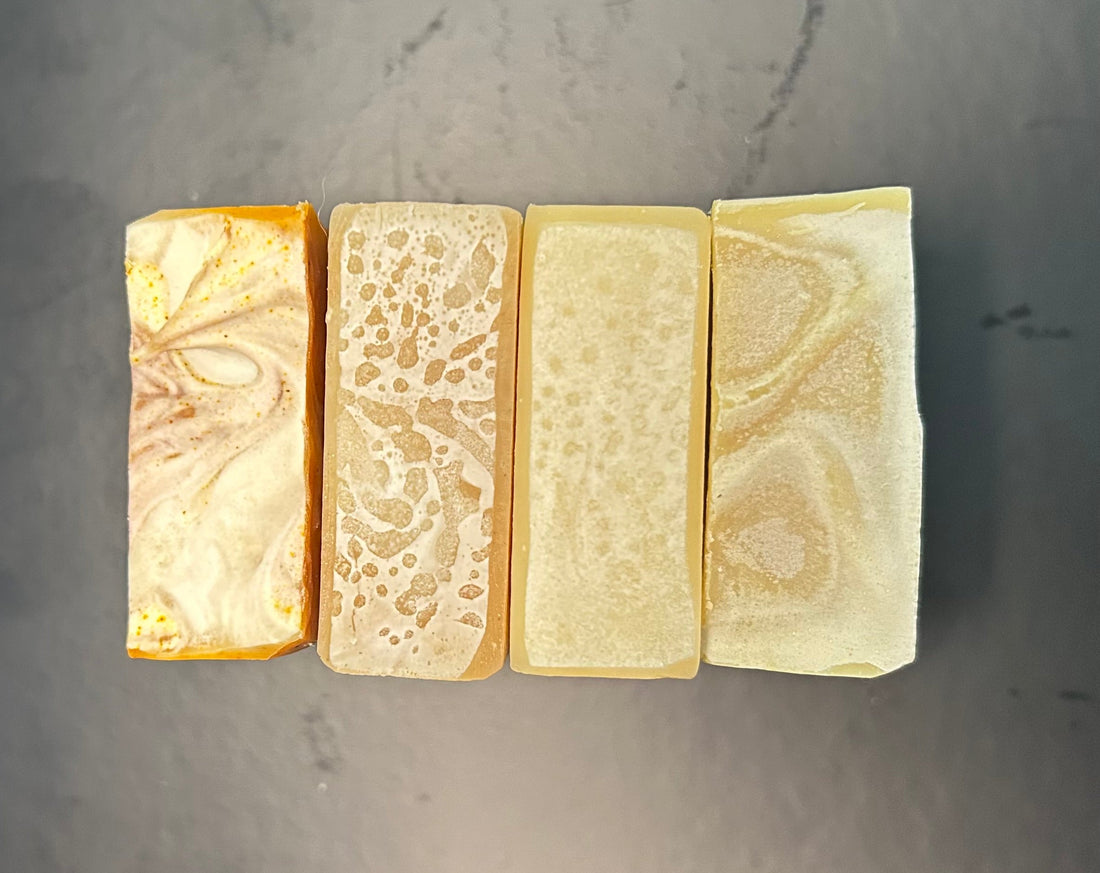
White Film on Soap? What Is Soda Ash & How To Fix It
Soda ash is the white, chalky-looking coating that sometimes forms on the surface of soap during the curing process.
It happens when unsaponified lye reacts with carbon dioxide in the air, creating sodium carbonate. This reaction usually happens on the surface, where the batter is exposed, and shows up as a dusty or cloudy layer.
It doesn’t affect the safety of your soap—it’s purely cosmetic. But if you’re making soap to sell or gift, it can be frustrating when your smooth tops don’t look as polished as you’d like.
Why Does Soda Ash Happen?
- Several factors can contribute to soda ash forming:
- High water content – More water in your lye solution makes ash more likely.
- Cooler soaping temperatures – Cooler temps slow down saponification, leaving the surface more vulnerable.
- Air exposure – The longer the surface is exposed to air before fully setting, the higher the chance of soda ash.
- Thin trace pours – A thinner batter can encourage more ash than a thicker trace.
How to Prevent Soda Ash
While soda ash isn’t completely avoidable, you can take steps to reduce the chances:
- Spray with alcohol – After pouring, spritz the top of your soap with 91% isopropyl alcohol to form a protective barrier.
- Cover tightly – Place a lid, plastic wrap, or parchment directly on the surface of the soap to limit air exposure.
- Control temperatures – Soap a little warmer (around 110–120°F) to speed up saponification.
- Water discount – Using less water in your lye solution can help reduce ash formation.
How to Remove Soda Ash
If soda ash still appears (and it often will at some point!), you can fix it easily:
- Steam method – A handheld steamer gently removes the powdery coating, leaving soap tops shiny again.
- Wash it off – Rinse the bars quickly under cold water and pat dry with a paper towel.
- Plane or bevel – If the ash is thick, use a soap planer or beveler to shave off the surface.
Should You Worry About Soda Ash?
Not at all! Soda ash is harmless and won’t affect how your soap performs. Many soapmakers embrace it as part of the handmade charm. But if you prefer clean, polished tops, these prevention and removal tips will help keep your bars looking their best.
Soda ash is one of those soapmaking quirks that can be annoying, but it’s also a rite of passage. Once you understand why it happens and how to manage it, you’ll see it as just another part of the craft.
Have you battled soda ash on your soaps? Did you try steaming, planing, or just embracing the look? Share your experience in the comments—I’d love to know how you handle it.